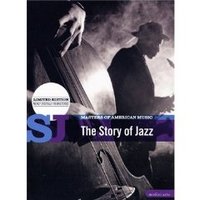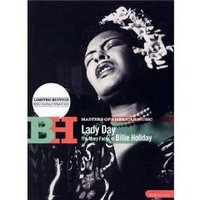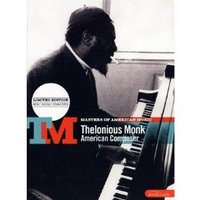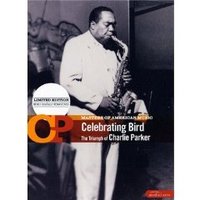A decade before Ken Burns aired his 20-hour 2001 PBS series “Jazz,” producer Toby Byron and friends had already labored halfway through their own ambitious video retrospective on what is not inappropriately called America’s classical music. Some parts of Byron’s “Masters of American Music” got onto TV, some saw only VHS release -- the first four segments of the current Naxos-Medici DVD reissue project make you appreciate the role that connections, timing and reputation play in establishing which documentaries get considered definitive and which are nearly forgotten. It’s now clear that Byron’s work in no way fell short.
In fact, the proportions of the 1993 “Masters” overview, “The Story of Jazz,” suggest that it could have served Burns as a template. Both “Story” and Burns’ “Jazz” lean heavily on the first 20 years of jazz’s recorded history; “Story” runs through more than an hour of its 98 minutes before it even arrives at the bebop revolution of the mid-1940s. Both devote generous swaths to Louis Armstrong and Duke Ellington while cutting a thin slice of the pie for the avantists of the 1960s; “Story” doesn’t mention Cecil Taylor, Albert Ayler, Archie Shepp or even Sonny Rollins.
In the case of both series, the imbalance is a fault. But that doesn’t mean there’s anything wrong with either’s coverage of the Dixieland, swing and bop eras. The “Masters” docs can boast one special strength: Before it was too late, they logged fresh interviews with musicians who knew the history firsthand. Dizzy Gillespie and Billy Eckstine, for instance, died in 1993, Carmen McRae in 1994, Joe Williams in 1999.
The second great strength of “Masters” lies in the archival performances. Even the overview (directed by Matthew Seig) lingers long enough on footage of Eckstine, Artie Shaw, Earl Hines and many more to leave vivid impressions of how they looked and played; many of the clips date to periods when few jazz musicians got their faces on film.
The stage shots stretch out even longer in the first three hourlong documentaries on individual artists -- Billie Holiday from 1990, Thelonious Monk from 1991 (both directed by Seig) and Charlie Parker from 1987 (by Gary Giddins and Kendrick Simmons). Each claims its own particular virtues. We see Holiday wither from a chubby child to a frail but devastating interpreter, her story given human warmth by the insightful memories of McRae and Annie Ross. Monk’s hats, clothes and face change while his fingers explore the consistently brilliant corners of his original mind; we understand his family life and historical context through the words of Thelonious Monk III and the great pianist Randy Weston (watch Weston’s spread-eagle hands as he demonstrates). Anytime you witness Parker’s otherworldly speed, inflection and imagination, it’ll blow you away, but Giddins’ documentary scores extra points for its thorough setup of the saxist’s early life in Kansas City, including a rare interview with his first wife, Rebecca, whom he married when he was 15.
In recent years, Naxos has ushered in a golden age of archival jazz with its mind-boggling “Jazz Icons” series of concert DVDs featuring Coltrane, Rollins, Mingus and more; the label remains far in front of a limited pack with “Masters of American Music,” which will add reissues on Trane, Sarah Vaughan, Count Basie and the blues next year. As the late trumpeter Lester Bowie observes in “The Story of Jazz,” this music remains a young art form. Injections like these guard it from premature senility.




